Complete Solutions to SECTION-II of chapter SAMPLE PAPER 2018 of Class 10 book with complete answers and questions
| Class 10 | BIOLOGY |
| Chapter | SAMPLE PAPER 2018 |
| GURUKUL | SECTION-II |
| Number Of Questions | 78 |
| Academic Year | 2023-24 |
The diagram given below represents a stage during cell division
Study the same and answer the questions that follow :
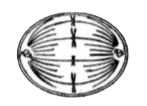
Identify whether it is a plant cell or an animal cell। Give a reason in support of your answer.02:05View SolutionThe diagram given below represents a stage during cell division
Study the same and answer the questions that follow :

Name the stage depicted in the diagram. What is the unique feature observed in this stage?02:38View SolutionThe diagram given below represents a stage during cell division
Study the same and answer the questions that follow :
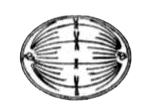
Name the type of cell division that occurs during:
Replacement of old leaves by new ones.
Formation of gametes01:48View SolutionThe diagram given below represents a stage during cell division
Study the same and answer the questions that follow :

What is the stage that comes before the stage shown in the diagram ?01:30View SolutionThe diagram given below represents a stage during cell division
Study the same and answer the questions that follow :

Draw a neat, labelled diagram of the stage mentioned in.03:34View SolutionGive the exact location and one function of the following:
Epididymis02:44View Solution(b) Mention the exact location of the following:
(i) Proximal convoluted tubule.
(ii) Lacrimal gland
(iii) Malleus
(iv) Hydathodes
(v) Semilunar valve02:11View Solution(b) Mention the exact location of the following:
(i) Proximal convoluted tubule.
(ii) Lacrimal gland
(iii) Malleus
(iv) Hydathodes
(v) Semilunar valve02:11View SolutionGive the exact location of
Hydathodes.01:04View SolutionState the exact location of the following
Pulmonary semilunar valve01:14View SolutionGiven below are diagrams showing the different stages in the process of fertilisation of an egg in the human female reproductive tract.
Study the diagrams and answer the questions

(i) Arrange the letters given below each diagram in a logical sequence to show the correct order in the process of fertilisation.
(ii) Where does fertilisation normally take place? What is 'Implantation' that follows fertilisation ?
(iii) Mention the chromosome number of the egg and zygote in humans.
(iv) Explain the term 'Gestation'. How long does Gestation last in humans ?
(v) Draw a neat, labelled diagram of a mature human sperm.09:22View SolutionGiven below are diagrams showing the different stages in the process of fertilisation of an egg in the human female reproductive tract.
Study the diagrams and answer the questions

(i) Arrange the letters given below each diagram in a logical sequence to show the correct order in the process of fertilisation.
(ii) Where does fertilisation normally take place? What is 'Implantation' that follows fertilisation ?
(iii) Mention the chromosome number of the egg and zygote in humans.
(iv) Explain the term 'Gestation'. How long does Gestation last in humans ?
(v) Draw a neat, labelled diagram of a mature human sperm.09:22View SolutionGiven below are diagrams showing the different stages in the process of fertilisation of an egg in the human female reproductive tract.
Study the diagrams and answer the questions

(i) Arrange the letters given below each diagram in a logical sequence to show the correct order in the process of fertilisation.
(ii) Where does fertilisation normally take place? What is 'Implantation' that follows fertilisation ?
(iii) Mention the chromosome number of the egg and zygote in humans.
(iv) Explain the term 'Gestation'. How long does Gestation last in humans ?
(v) Draw a neat, labelled diagram of a mature human sperm.09:22View SolutionGiven below are diagrams showing the different stages in the process of fertilisation of an egg in the human female reproductive tract.
Study the diagrams and answer the questions

(i) Arrange the letters given below each diagram in a logical sequence to show the correct order in the process of fertilisation.
(ii) Where does fertilisation normally take place? What is 'Implantation' that follows fertilisation ?
(iii) Mention the chromosome number of the egg and zygote in humans.
(iv) Explain the term 'Gestation'. How long does Gestation last in humans ?
(v) Draw a neat, labelled diagram of a mature human sperm.09:22View SolutionGiven below are diagrams showing the different stages in the process of fertilisation of an egg in the human female reproductive tract.
Study the diagrams and answer the questions

(i) Arrange the letters given below each diagram in a logical sequence to show the correct order in the process of fertilisation.
(ii) Where does fertilisation normally take place? What is 'Implantation' that follows fertilisation ?
(iii) Mention the chromosome number of the egg and zygote in humans.
(iv) Explain the term 'Gestation'. How long does Gestation last in humans ?
(v) Draw a neat, labelled diagram of a mature human sperm.09:22View SolutionA potted plant with variegated leaves was taken in order to prove a factor necessary for photosynthesis. The potted plant was kept in the dark for 24 hours and then placed in bright sunlight for a few hours Observe the diagrams and answer the questions.
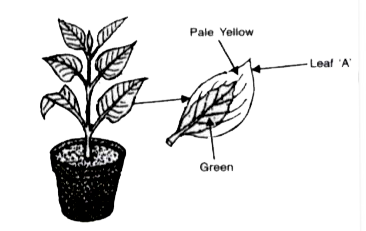
What aspect of photosynthesis is being tested in the above diagram?05:19View SolutionA potted plant with variegated leaves was taken in order to prove a factor necessary for photosynthesis. The potted plant was kept in the dark for 24 hours and then placed in bright sunlight for a few hours Observe the diagrams and answer the questions.

Represent the process of photosynthesis in the form of a balanced equation02:38View SolutionA potted plant with variegated leaves was taken in order to prove a factor necessary for photosynthesis. The potted plant was kept in the dark for 24 hours and then placed in bright sunlight for a few hours Observe the diagrams and answer the questions.
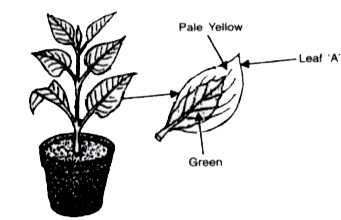
Why was the plant kept in the dark before beginning the experiment?02:12View SolutionThe diagram given below is an experiment conducted to study a factor necessary for photosynthesis Observe the diagram and then answer the following questions
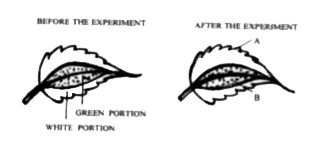
Name the test performed on the leaf and the solution used for the test04:17View SolutionA potted plant with variegated leaves was taken in order to prove a factor necessary for photosynthesis. The potted plant was kept in the dark for 24 hours and then placed in bright sunlight for a few hours Observe the diagrams and answer the questions.
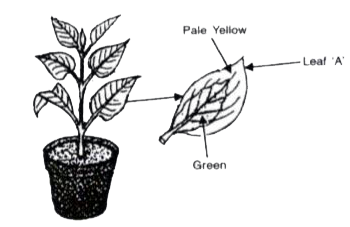
Draw a neat labelled diagram of a chloroplast03:24View SolutionThe diagram given below shows the internal structure of a spinal cord depicting a phenomenon. Study the diagram and answer the questions:
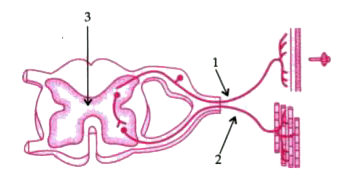
Name the phenomenon that is depicted in the diagram. Define the phenomenon.01:52View SolutionThe diagram given below shows the internal structure of a spinal cord depicting a phenomenon. Study the diagram and answer the questions:
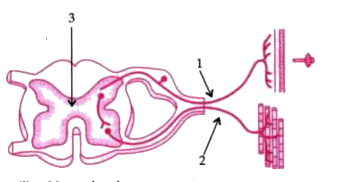
Give the technical term for the point of contact between the two nerve cells.03:28View SolutionThe diagram given below shows the internal structure of a spinal cord depicting a phenomenon. Study the diagram and answer the questions:
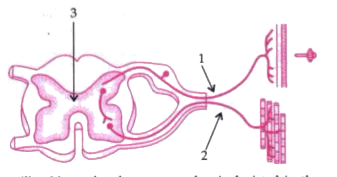
Name the phenomenon that is depicted in the diagram. Define the phenomenon.01:52View SolutionHow does the arrangement of neurons in the spinal cord differ from that of the brain?
01:25View SolutionMention two ways by which the spinal cord is protected in our body.
01:05View SolutionGive appropriate biological or technical terms for the following:
Process of maintaining water and salt balance in the blood.02:35View SolutionGive technicallbiological term for the following:
(ii) Hormones which regulate the secretion of other endocrine glands.02:38View SolutionGive appropriate biological / technical terms for the following:
The ripened ovule.02:29View SolutionGive biological/ technical terms for the following:
The condition in which a pair of chromosomes carry similar alleles of a particular character.02:13View SolutionGive appropriate biological or technical terms for the following:
The complex consisting of a DNA strand and a core of histones.02:49View SolutionGive the biological/technical terms for the following:
The onset of menstruation in a young girl.02:12View SolutionGive biological technical terms for the following
Squeezing out of white blood cells from the capillaries into the surrounding tissues,01:15View SolutionGive appropriate biological or technical terms for the following:
The fluid which surrounds the foetus.01:21View SolutionGive appropriate biological or technical terms for the following:
The relaxation phase of the heart.01:53View SolutionGive biological term for the following
The difference between the birth rate and the death rate.01:57View SolutionThe diagram given below is that of a structure present in a human kidney. Study the same and answer the questions that follow:
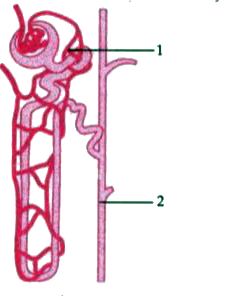
Name the structure represented in the diagram.02:01View SolutionThe diagram given below is that of a structure present in a human kidney. Study the same and answer the questions that follow:

What is the liquid entering part '1' called ? Name two substances present in this liquid that are reabsorbed in the tubule.02:24View SolutionThe diagram given below is that of a structure present in a human kidney. Study the same and answer the questions that follow:

What is the fluid that comes to part '2' called ? Name the main nitrogenous waste in it.01:57View SolutionThe diagram given below is that of a structure present in a human kidney. Study the same and answer the questions that follow:
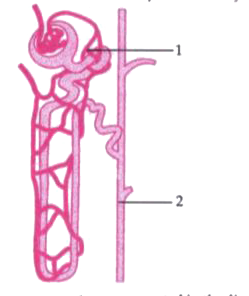
Mention the three main steps involved in the formation of the fluid02:04View SolutionThe diagram given below is that of a structure present in a human kidney. Study the same and answer the questions that follow:

Name the substance which may be present in the fluid in part 2' if a person suffers from Diabetes mellitus.01:45View SolutionDifferentiate between the following pair on the basis of what is mentioned within bracket
leaf and liver (from In which glucose is stored)01:36View SolutionDifferentiate between the following pair on the basis of what is mentioned within bracket
ATP and AIDS ( expand the abbrevaitions)01:27View SolutionDifferentiate between :
Testosterone and Oestrogen (organ which secretes]00:59View SolutionDifferentiate between the following pair on the basis of what is mentioned within brackets:
Ureter and Urethra [function]02:44View SolutionDifferentiate between the following pairs on the basis of what is mentioned in brackets:
Hypotonic solution and Hypertonic solution [condition of a plant cell when placed in them]01:17View SolutionStudy the diagram and answer the questions that follow :
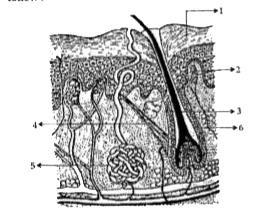
Label the parts 1 - 4.04:30View SolutionStudy the diagrams given below and answer the questions tht follow:

Mention two structural differences between 1 and 202:07View SolutionGiven below is a diagram of a human blood smear. Study the diagram and answer the questions that follow:

Name the soluble protein found in part 4 which forms insoluble threads during clotting of blood01:43View SolutionGiven below is a diagram of a human blood smear. Study the diagram and answer the questons that follow:
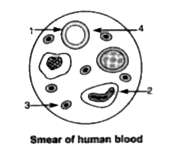
Whatis the average lifespan of the component numbered '1' ?01:07View SolutionGiven below is a diagram of a human blood smear. Study the diagram and answer the questions that follow:

Component numbered '1' do not have certain organelles but are very efficient in their function Explain.03:04View SolutionGive biological reason for the following statement
Education is very important for population control.02:45View SolutionComment upon the following:
The placenta is an important structure for the development of a foetus.03:03View SolutionGive biological reason for the following statements :
Plants growing in fertilized soil are often found to wilt if the soil is not adequately watered.01:13View SolutionGive biological reason for the following:
We should not put sharp objects into our ears.01:18View SolutionThe diagram below represents a process in plants. The setup was placed in bright sunlight. Answer the following questions :
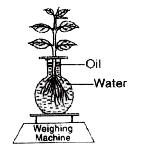
Name the physiological process depicted in the diagram .
Why was oil added to the water?01:18View SolutionThe diagram below represents a process in plants. The setup was placed in bright sunlight. Answer the following questions :
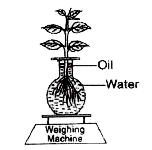
When placed in bright sunlight for four hours, what do you observe with regard to the initial and final weight of the plant?
Give a suitable reason for your answer.01:37View SolutionThe diagram below represents a process in plants. The setup was placed in bright sunlight. Answer the following questions :

What happens to the level of water when this setup is placed in:
1. Humid conditions? 2. Windy conditions?03:16View SolutionThe diagram below represents a process in plants. The setup was placed in bright sunlight. Answer the following questions :
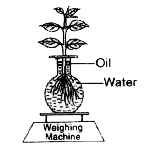
Mention any three adaptations found in plants to overcome this process?03:08View SolutionThe diagram below represents a process in plants. The setup was placed in bright sunlight. Answer the following questions :

Explain the term 'Guttation'01:09View SolutionA pea plant which is homozygous for Green pods which are inflated [GGII) is crossed with a homozygous plant for yellow pods which are constricted (ggii). Answer the following questions:
Give the phenotype and genotype of the F generation. Which type of pollination has occurred to produce F, generation?05:45View SolutionA pea plant which is homozygous for Green pods which are inflated [GGII) is crossed with a homozygous plant for yellow pods which are constricted (ggii). Answer the following questions:
Write the phenotypic ratio of the F generation.07:26View SolutionGive biological reason for the following statements :
Plants growing in fertilized soil are often found to wilt if the soil is not adequately watered.01:13View SolutionGive biological reason for the following:
We should not put sharp objects into our ears.01:18View SolutionThe diagram below represents a process in plants. The setup was placed in bright sunlight. Answer the following questions :

Name the physiological process depicted in the diagram .
Why was oil added to the water?01:18View SolutionThe diagram below represents a process in plants. The setup was placed in bright sunlight. Answer the following questions :

When placed in bright sunlight for four hours, what do you observe with regard to the initial and final weight of the plant?
Give a suitable reason for your answer.01:37View SolutionThe diagram below represents a process in plants. The setup was placed in bright sunlight. Answer the following questions :

What happens to the level of water when this setup is placed in:
1. Humid conditions? 2. Windy conditions?03:16View SolutionThe diagram below represents a process in plants. The setup was placed in bright sunlight. Answer the following questions :

Mention any three adaptations found in plants to overcome this process?03:08View SolutionThe diagram below represents a process in plants. The setup was placed in bright sunlight. Answer the following questions :

Explain the term 'Guttation'01:09View SolutionA pea plant which is homozygous for Green pods which are inflated [GGII) is crossed with a homozygous plant for yellow pods which are constricted (ggii). Answer the following questions:
Give the phenotype and genotype of the F generation. Which type of pollination has occurred to produce F, generation?05:45View SolutionA pea plant which is homozygous for Green pods which are inflated [GGII) is crossed with a homozygous plant for yellow pods which are constricted (ggii). Answer the following questions:
Write the phenotypic ratio of the F generation.07:26View SolutionGive biological reason for the following:
We should not put sharp objects into our ears.01:18View SolutionThe diagram below represents a process in plants. The setup was placed in bright sunlight. Answer the following questions :

Name the physiological process depicted in the diagram .
Why was oil added to the water?01:18View SolutionThe diagram below represents a process in plants. The setup was placed in bright sunlight. Answer the following questions :

When placed in bright sunlight for four hours, what do you observe with regard to the initial and final weight of the plant?
Give a suitable reason for your answer.01:37View SolutionThe diagram below represents a process in plants. The setup was placed in bright sunlight. Answer the following questions :

What happens to the level of water when this setup is placed in:
1. Humid conditions? 2. Windy conditions?03:16View SolutionThe diagram below represents a process in plants. The setup was placed in bright sunlight. Answer the following questions :

Mention any three adaptations found in plants to overcome this process?03:08View SolutionThe diagram below represents a process in plants. The setup was placed in bright sunlight. Answer the following questions :

Explain the term 'Guttation'01:09View SolutionA pea plant which is homozygous for Green pods which are inflated [GGII) is crossed with a homozygous plant for yellow pods which are constricted (ggii). Answer the following questions:
Give the phenotype and genotype of the F generation. Which type of pollination has occurred to produce F, generation?05:45View SolutionA pea plant which is homozygous for Green pods which are inflated [GGII) is crossed with a homozygous plant for yellow pods which are constricted (ggii). Answer the following questions:
Write the phenotypic ratio of the F generation.07:26View Solution
SECTION-II questions and complete solutions for chapter SAMPLE PAPER 2018 of EVERGREEN BIOLOGY (ENGLISH) of Class 10
